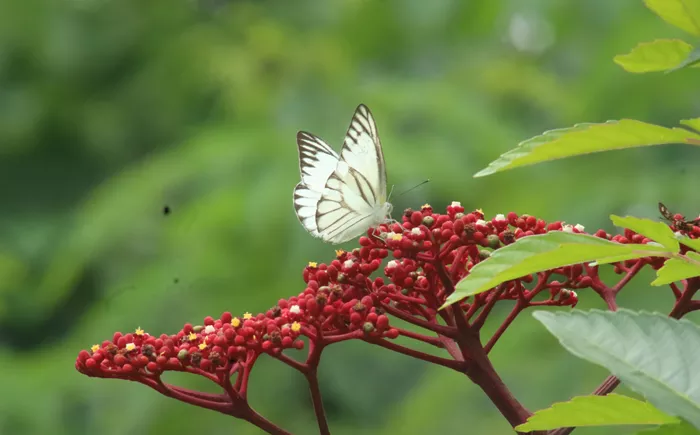A recent study in Singapore reveals that narrow strips of flowering plants along roadsides can significantly increase the number and variety of butterflies in the city.
Researchers from Nanyang Technological University (NTU) surveyed 101 roadside green strips, known as road verges, and found 56 different butterfly species feeding on nectar from 96 types of flowering plants during 1,320 recorded visits.
Surprisingly, most of these plants were nonnative species, showing that even artificial and carefully managed roadside greenery can provide valuable habitats for butterflies in tropical urban environments.
The study also found that road verges with a wide variety of flowering plants, which were cut less often and had plants of different heights, supported more butterfly species than those with uniform, flat vegetation.
This suggests that less frequent trimming and planting diverse flowers can create better conditions for butterflies without needing large green spaces.
Traffic conditions affected butterfly diversity as well. Areas with heavy traffic and higher vehicle speeds had fewer butterflies. The researchers recommend slowing traffic in residential areas and designing road verges to be more biodiversity-friendly to help protect these pollinators while improving safety for pedestrians.
Moreover, larger green spaces near road verges helped butterflies by providing additional nectar sources and places for butterfly larvae to grow. Connecting small roadside habitats with bigger parks and gardens creates a network that supports butterfly populations and protects them from harsh weather.
This study fills a gap in research because most previous work on road verges focused on temperate regions, while this one examined a tropical city undergoing rapid urbanization.
Singapore, which lost most of its primary forests by the early 1900s, has since worked to green the city. Today, about half of Singapore’s land is covered in vegetation, mostly urban parks and secondary forests. The city’s goal to become “A City in Nature” by integrating green spaces into urban planning makes it a useful example for other tropical cities aiming to boost urban biodiversity.
In summary, planting and maintaining diverse flowering plants along roadsides is a simple, cost-effective way to support butterfly diversity in cities. This approach not only beautifies urban areas but also helps protect important pollinators essential for healthy ecosystems


